For those readers who have been following our Moreton Bay Fig journey since my first post in March 2015, it is now almost 5 years since the tube stock arrived from NSW and time for a further update.
We are having varying degrees of success. As reported in my last updates (May 2016 and June 2017), fig #4 had been removed from the property due to ill health and was on R&R in Perth in a pot. In October 2017 we decided that it was about to outgrow the pot and that it was time for its return to the country.

Getting it back to the country was another story and, as you can see, it took up most of the Landcruiser – much to the consternation of the dog!
The fig was planted in the ground in January 2018 and, unlike the other figs, has the benefit of regular watering via our reticulation system.
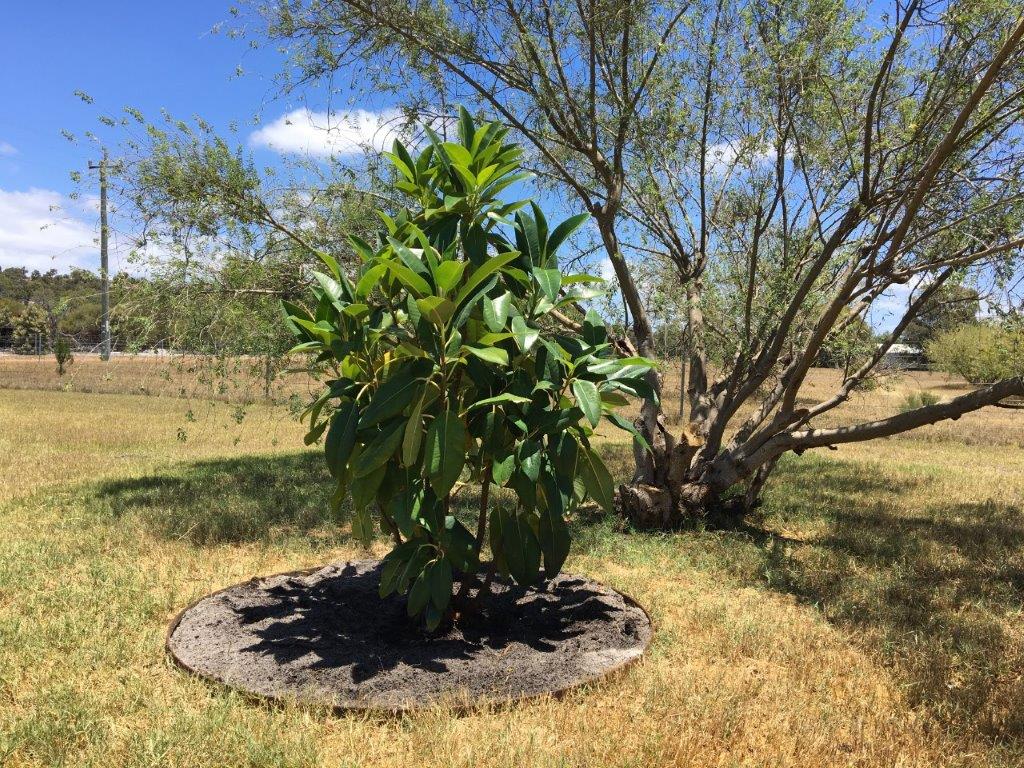
Fig #4 replanted. The Corten steel surround is there to help keep the couch grass away from the roots and will be removed at the appropriate time. The Tagasaste behind the fig has been left to provide a bit of protection and will also be removed.
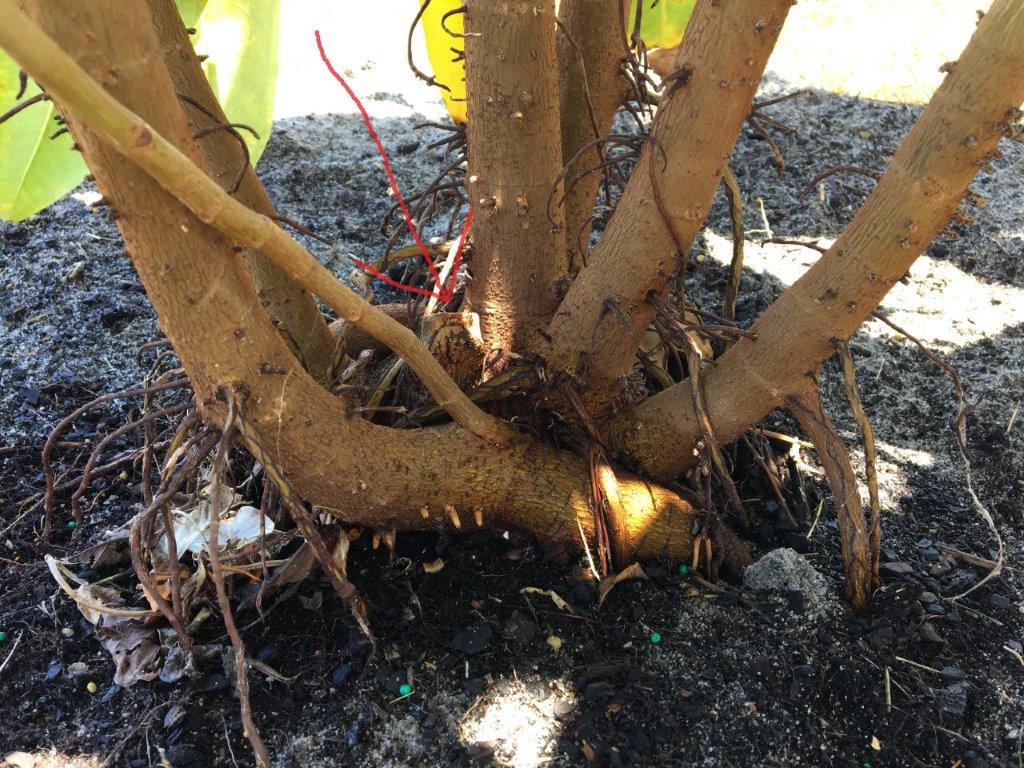
Photos 3 & 4: Fig #4 root system at replanting (Above) and 12 months later (Below). The red arrow points to the original trunk that died right back.
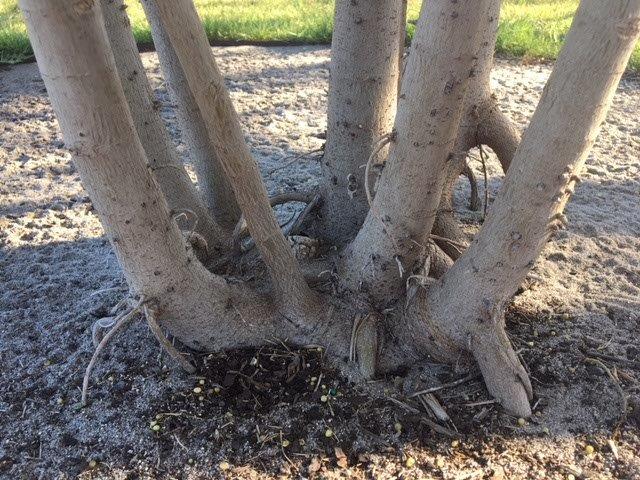
In contrast to the other 3 figs we planted, this one has been planted on a sandy rise that would have originally been banksia sandplain until it was cleared (not by us), then used as a paddock and most recently forms part of our large house paddock. I didn’t add much to the soil (sand) other than a wetting agent and a small amount of Seamungus (a soil and plant conditioner). Once I saw new growth, I did add a slow release general fertiliser, but this is pretty much it.
For a while after planting things went a bit backwards but now this is our best success story and I think there are a few main reasons for this.
Firstly, I think I made a mistake originally choosing to plant the figs on the river flats. I thought the soil would be richer and they would have better access to water. However, the reality has been that they are susceptible to flooding/water logging in winter and during the dry summer months the ground sets like concrete – I know fig roots are strong but there’s a difference between survival and thriving.
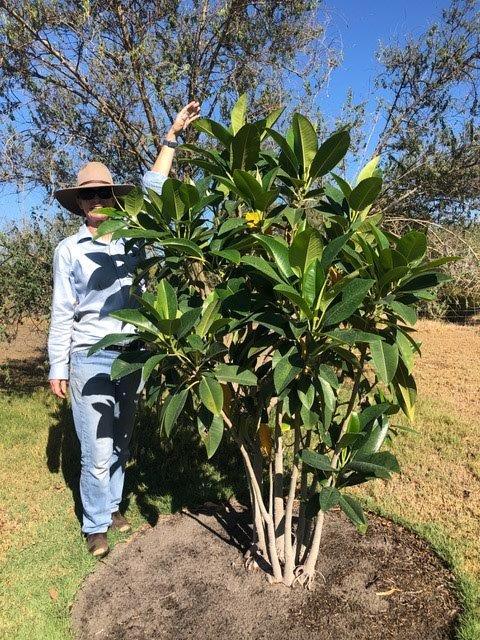
Fig #4. Multi-trunked and 2.02m high
Secondly, we have developed a better watering system for the figs. In addition to the reticulation watering that only this fig gets, I have recently started giving them a good deep drink about once a month. To do this we have a 200L water tank on the back of a small farm vehicle and use a piece of plastic hose (about 20mm in diameter and 4m long) to syphon the water on to the fig.
We probably should have developed this system much earlier, but it wasn’t until a larger rescue fig (not a Moreton Bay) came into our possession and we realised that the existing spray system wasn’t going to work, that the cogs started working properly.
So now we are unsure what to do with the three figs that are planted on the river flats. They are growing but I think they could be doing better and would probably be happier on the sandy hills that we have. I may try moving the least happy one to see how that fares but, as we do experience some frosts, I think spring may be the best time with lots of deep watering over the following summer.
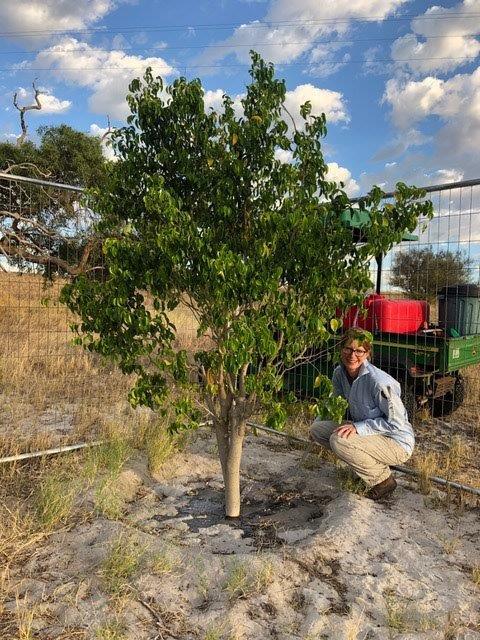
The rescue fig, Fig #5 ( Ficus benjamina) being watered with the syphon system. And, yes, those power lines are further away than they look!
The 5th fig that has joined the family was in a pot in suburban Perth. However, the roots had escaped the pot and headed next door where they weren’t welcome. By the time it came to us its roots had been controlled somewhat but we had to cut them back further to get it out of the pot. This one is also planted on a sandy hill and gets a deep water about every fortnight. Despite the severe treatment it has had it has coped well with the long, hot summer.
So where does that leave us? Following are current photos of all the figs. I hope you find them of interest.
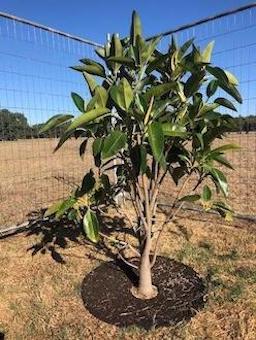
Fig #1 at 1.50m
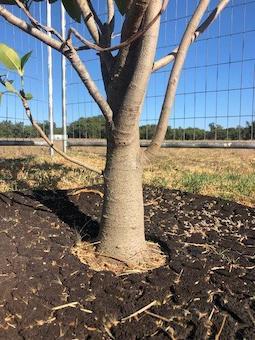
Fig #1 close
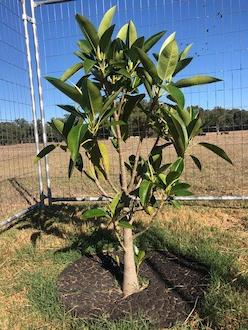
Fig #2 at 1.24m
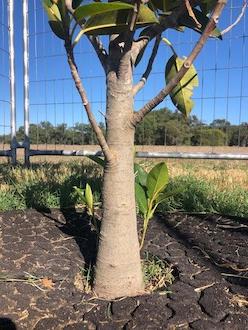
Fig #2 close

Fig #3 at 0.93m
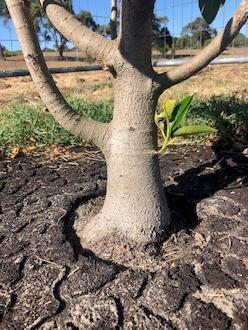
Fig #3 close
NOTE: The trunks of the figs planted on the river flats have certainly thickened up since planting, but the foliage is considerably less dense, and the leaf size is smaller, than Fig #4.
